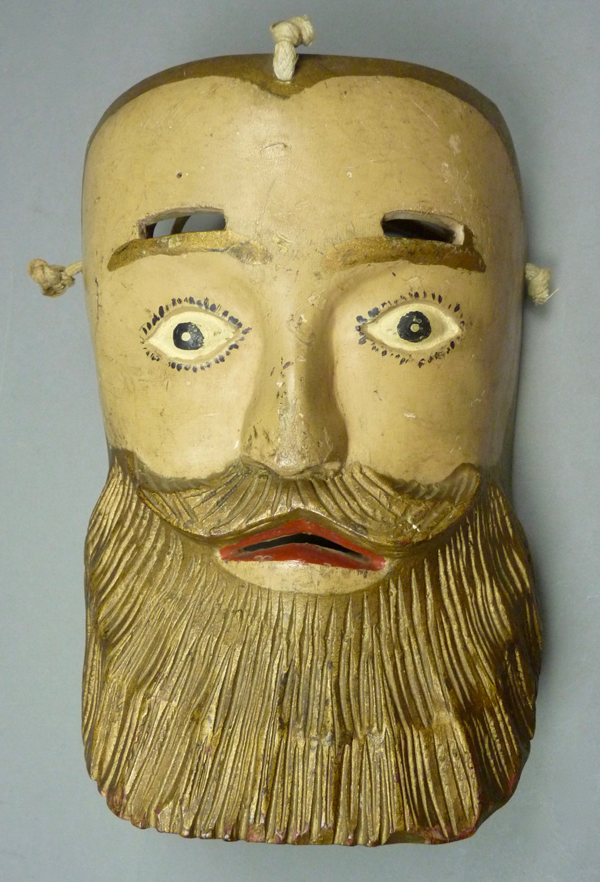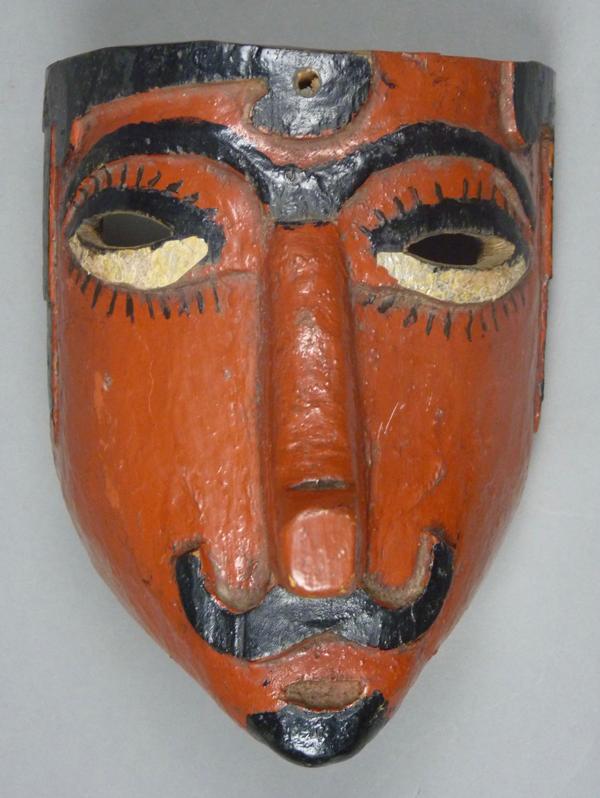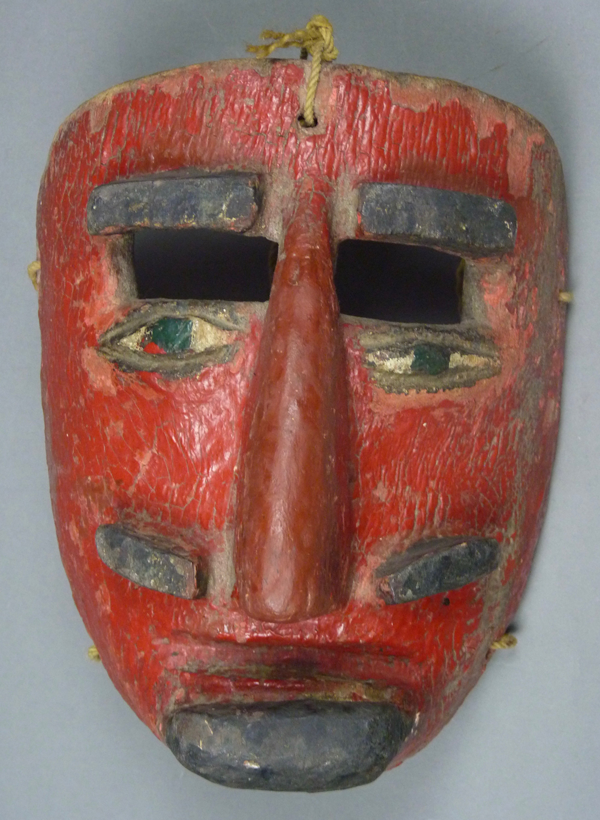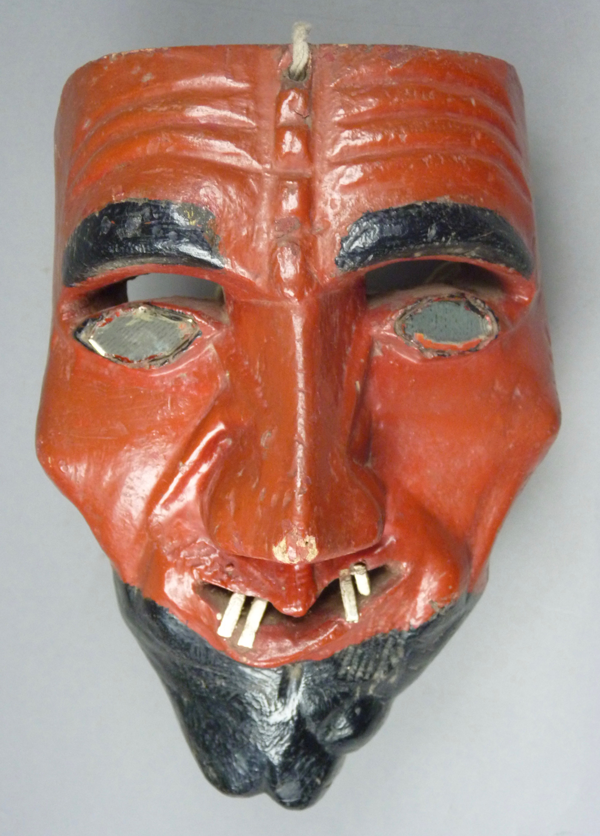Today we will look at a trio of masks from a variant of the Santiagueros dance, which in some areas of Puebla has the local name of La Danza de Negros. It would seem in this case that the Negros dancers do NOT represent Afro-mestizos or Black people, but rather “dark ones.” In this instance, the Santiagueros have golden beards and the Negros have dark beards, analogous to the white hat/black duality that was once common in American Westerns. Probably the bad guys represent the Spanish conquerors. As I labored to clarify my understanding of these three masks, I was pleased and surprised to recognize that two of them were apparently by the same hand and all three were possibly from the same dance, although I had purchased them as unrelated. They came with limited information, and then a very recent YouTube™ video had revealed identical or similar masks performing in modern and well documented dances (see link that follows the first photo of the female mask). Here is the first mask, which I purchased from Robin and Barbara Cleaver in June of 1988. It was described then as a Santiaguero mask from the Santiagueros dance in Agua de la Mina, in the municipio of Guadalupe Victoria, Puebla. Agua de la Mina is about 25 miles to the northwest of Chichiquila, Puebla, which will serve today as a central reference point.

This Santiaguero is a beautiful old mask with worn paint.
Here is a YouTube™ video of the Danza de Negros in Agua de la Mina, municipio de Saltillo la Fragua, Puebla. It turns out that this is the same Agua de la Mina, but apparently the county seat (municipio) has changed since the time the mask was collected. This (optional) video is poorly focused, so that one cannot see that the dancers are not wearing masks, while another imperfect video (shot sideways) reveals that the dancers wear kerchiefs over their faces in lieu of masks. I offer the blurry one to document their costumes, which are those of Santiagueros in this area of Puebla, and to establish that this dance is still performed in Agua de la Mina, with kerchiefs for masks.
https://www.youtube.com/watch?v=hXXiq3KNsgw
A video from El Carmen in the municipio of Chilcotla, Puebla is in sharp focus and reveals the “Danza de Negritos” in that town, also with kerchiefs instead of masks. El Carmen is about 10 miles south of Agua de la Mina. Masks may have gone out of fashion in Agua de la Mina, although later we will observe that they are still in fashion a little further south in Chichiquila, and that the masks there look just like those in today’s post.
https://www.youtube.com/watch?v=dDrTDS43zq8
Continue Reading →




